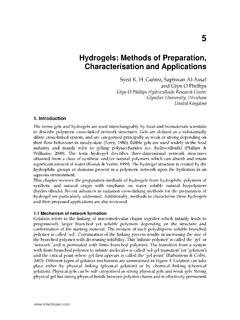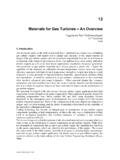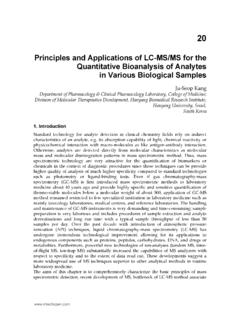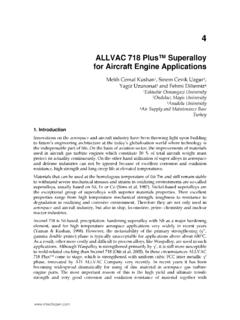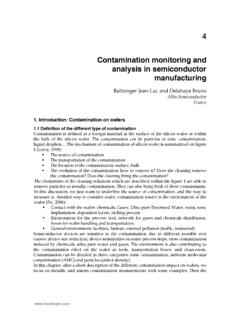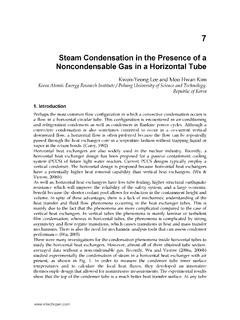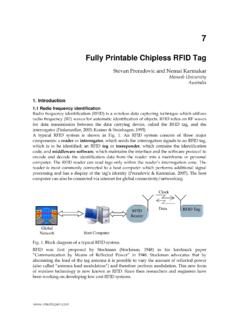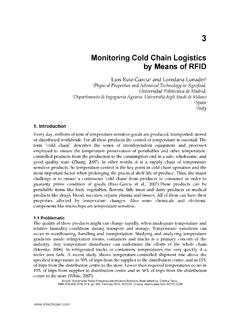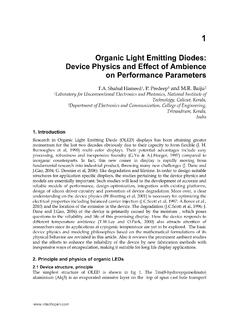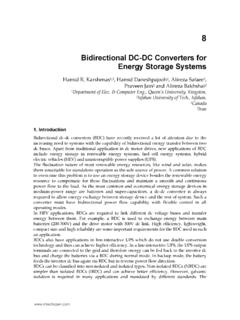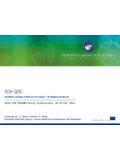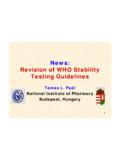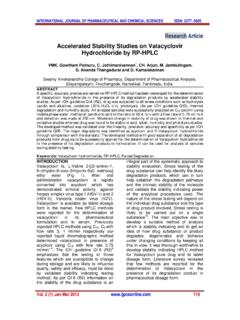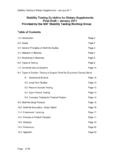Transcription of Stability Indicating Methods - cdn.intechweb.org
1 3. Stability Indicating Methods Ana Paola Cione, Edivan Tonhi and Paulo Silva Bioagri Laborat rios Brazil 1. Introduction How define a SIM? According to FDA guideline (Guidance for Industry, Analytical Procedures and Methods Validation, FDA, 2000), a Stability Indicating Method (SIM) is defined as a validated analytical procedure that accurate and precisely measure active ingredients (drug substance or drug product) free from process impurities, excipients and degradation products. The FDA recommends that all assay procedures for Stability should be Stability Indicating . The main objective of a Stability Indicating method is to monitor results during Stability studies in order to guarantee safety, efficacy and quality.
2 It represents also a powerful tool when investigating out-of-trend (OOT) (Swartz et al., 2004) or out-of-specification (OOS) results (CDER, 2006) in quality control processes. How develop a SIM? There are basically 3 steps necessary for developing a SIM: Step 1: generation of degraded samples for testing selectivity of the method Here lies one of the main concerns related to a development of a SIM, since the available guidance documents do not state the extent to which stress tests should be carried out . that is, how much stress should be applied or how much degradation should be aimed for. In fact, there is not a gold rule that attends this issue and therefore, it is important to keep in mind that experimental conditions of stress tests, should be realistic and lead to purposeful degradation (Ngwa, G.)
3 , 2010). Stress tests should generate representative samples to assess drug substance and drug product Stability , provide information about possible degradation pathway and demonstrate the Stability Indicating power of the analytical procedures applied. Determination of Limit of Quantification (LoQ). In close relation to the determination of the amount of degradation is the evaluation of Limit of Detection (LoD) and Limit of Quantification (LoQ) of the method. These limits should be closely related to the Reporting, Identification and Qualification of degradation products, as stated in ICH Q3B (R2) (EMEA, 2006). These thresholds are determined either as percentage of drug substance or total daily intake (TDI) of degradation product.
4 26 Quality Control of Herbal Medicines and Related Areas The analytical Methods are usually expected to be validated for the ability to quantify potential degradation products and drug impurities with a LoD and LoQ at least as sensitive as the ICH threshold (see Figure 1). Fig. 1. ICH thresholds for degradation products in New Drug Application (ICH Q3B). ingredient in the dosage form, or from 5 g to 2 mg TDI, depending on the maximum daily The identification threshold (IT) varies from to of the labeled amount of active dosage in the product s professional labeling. The identification threshold may be lowered for degradation products that may be exceptionally toxic.
5 The Reporting Threshold (RT) is either or depending on the maxim daily dosage. For very low dose drug products, where this type of sensitivity is not attainable, even after exhaustive tentative, justification may be provided describing the failed reports. Process-related drug substance impurities that are also degradation products should have the same limits as for ICH Q3B. Stability Indicating Methods 27. Ideally, the same analytical methodology should be used for Quality Control and Stability Studies. The determination of Out-of-Specification or Out-of-Trend results should be more reliable, when using a SIM, since LoD and LoQ used allows detection of impurities and/or degradation products adequately.
6 In the situation in which a new peak arises during Stability study and one may expect that it should not exist and hence it would constitute a type of OOT, the use of a well studied and well determined LoQ in a SIM, will help the applicator to decide if additional action are needed to investigate a new substance or a OOT. It should be mentioned that these thresholds are established for new drug products or New Drug Application (NDA). For Abbreviated New Drug Application (ANDA) or generic drugs, there are not specific regulations about this topic and even less, the companies dealing with these products, have background information as those obtained in the development of NDA.
7 Such application is expected to contain a full description of the drug substance including its physical and chemical characteristics and Stability as well; such specifications and analytical Methods are necessary to assure the identity, strength, quality, purity and bioavailability of drug product and Stability data with proposed expiration date . As already cited, for ANDA, there are not specific regulations and the same ICH recommendation has been used. However, precisely because of the lack of information derived from the new drug development, the complexity and responsibility in developing/validating a SIM for an ANDA is high.
8 Information like aqueous solubility, pH versus solubility profile, excipients compatibility studies, etc, all information that enable fully assume the knowledge of the product ,will help to ensure that best (more appropriate) condition were chosen for developing a SIM, like those related to the forced degradation design. Overstressing/Understressing Care should be taken in order to avoid overstressing or understressing samples, with may lead to non representative or non-purposeful degradation. So, the use of a properly designed and executed forced degradation study will generate representative samples that will help to ensure that resulting method reflects adequately long-term Stability (EMEA, 2003).
9 About the forced degradation (or stress test, both terms will be used in the text) design, it is recommended (Klick S., et al, 2005) to include alkaline and acidic hydrolysis, photolysis, oxidation, humidity and temperature stress. An compilation of data from literature (Klick S., et al, 2005; Alsante et al. 2007, Reynolds, et al. 2002, Reynolds, , 2004; Kats M., 2005;. Reynolds, , 2002) is shown at Table 1 and compiles the more often used conditions to perform forced degradation studies. These conditions can be used as a starting point in the development of a SIM. Changing conditions to harsher or softer levels, can be applied, when too little or too much degradation are obtained.
10 For example, in cases in which too little degradation was obtained in the hydrolyses stress, it is recommended to increase concentrations to 1 Mol L-1 or higher;. for oxidation stress, increase peroxide concentration to 10% or 20% (v/v) and/or time of reaction, as well as temperature. If co-solvents are necessary to increase solubility, it is recommended the use of acetonitrile that does not work as a sensitizer in photostability stress. Data needs to be evaluated as unusual degradants may form with co-solvents. If even not all conditions may cause degradation, document efforts and severity of conditions and should be include in final report.
